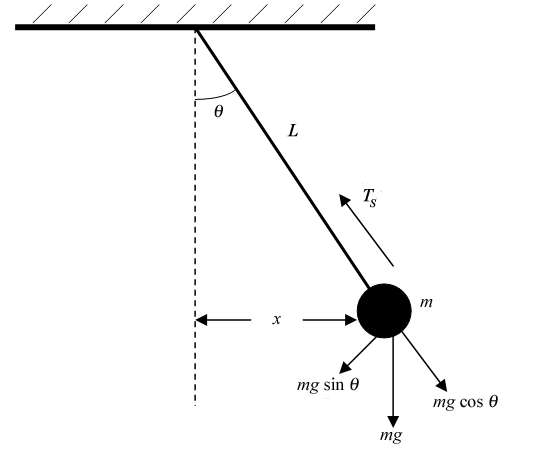Energy Conservation in Simple Harmonic Motion (SHM)
In any ideal system undergoing Simple Harmonic Motion, the total mechanical energy remains constant. This energy shifts between kinetic and potential forms, but the sum of both stays the same at every instant in time.
Total Mechanical Energy
The total energy in SHM is the sum of the potential energy stored in the spring and the kinetic energy of the mass:
Here:
- \( E \) is the total mechanical energy
- \( k \) is the spring constant
- \( A \) is the amplitude of oscillation
Why Is Energy Conserved?
In an ideal SHM system, there is no friction, air resistance, or energy loss to heat. That means energy simply transforms between kinetic (due to motion) and potential (due to compression/stretching of the spring), but the total amount stays the same.
Breakdown Over a Cycle
- At maximum displacement (\( x = \pm A \)): All energy is stored as spring potential energy.
- At equilibrium (\( x = 0 \)): All energy is in the form of kinetic energy (mass moves fastest).
- In between: The system has both KE and PE, but their sum is constant.
Pendulum Case
For a simple pendulum of length \( L \) and mass \( m \), energy conservation also applies. The total energy remains constant and is exchanged between kinetic energy and gravitational potential energy:

Where:
- \( v \) is the speed of the pendulum bob
- \( \theta \) is the angular displacement from the vertical
- \( L \) is the length of the pendulum
At the highest point, the pendulum has maximum potential energy and zero kinetic energy. At the lowest point, all energy is kinetic.
Deriving the Pendulum Energy Formula
The height \( h \) of the pendulum bob above its lowest point at angle \( \theta \) is given by:
Using this, the gravitational potential energy is:
The kinetic energy, as usual, is:
So the total energy at any position is:
Graphical Representation
A plot of energy over time shows oscillation between kinetic and potential energy, while total energy remains flat and constant:
Key Takeaway
Energy conservation is a hallmark of SHM. It allows us to analyze motion using energy principles, even without solving differential equations.